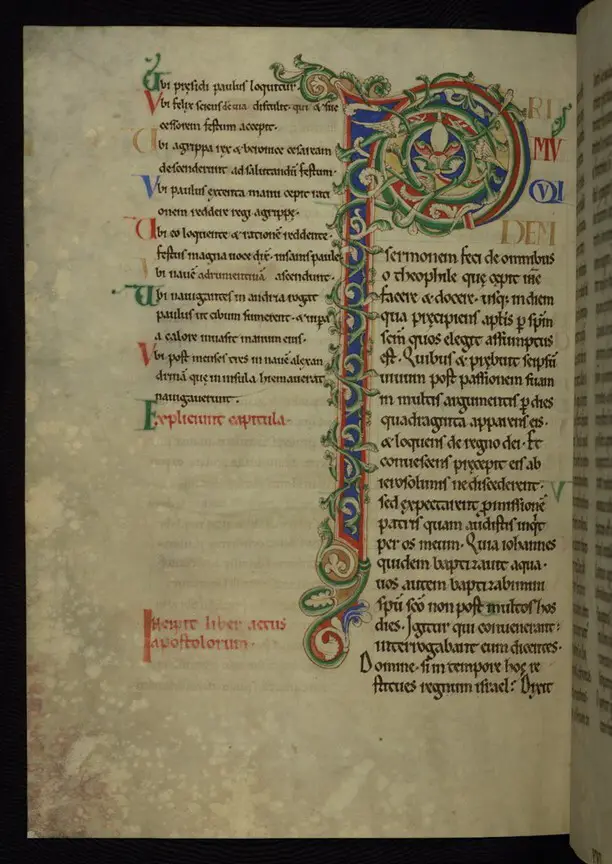|
Getting your Trinity Audio player ready...
|
When people talk about books, they tend to think of literature and fiction first. However, there is a huge market for non-fiction. For example, only recently, Prince Harry’s memoirs broke UK records, selling 400,000 copies in one day. But with all the history, science, biography, and DIY texts available, what is the best-selling non-fiction book of all time? You might find the answer surprising.
The best-selling non-fiction book of all time is the Bible. As everyone knows, it is a collection of sacred texts revered by Christians, Jews, and many others. The Bible has been translated into more than 2,800 languages and more than 5 billion copies have been printed.
What constitutes the Bible?

The Bible is composed of a variety of shorter texts that were combined to form the greater work.
Furthermore, although it is considered sacred by many religions, some of them only count parts of it as valid.
Christians divide it into the Old Testament and New Testament.
- The Old is the story of the founding of the Israelites as a nation and Judaism as a religion.
- The New is the story of Jesus, who Christians believe to be the Messiah, and his teachings.
The Jewish Bible
Meanwhile, Jews consider the Old Testament to be the entire Hebrew Bible, or Tanakh as they call it. The Tanakh is divided into three sections:

- the Torah (Law)
- Nevi’im (Prophets), and
- Ketuvim (Writings)
The Torah combines stories—including the creation myth and those of the founders of the Israelite nation—with religious law.
Nevi’im is a sequence of books about the major Hebrew prophets.
While Ketuvim collects poetry, theology, and narrative.
The Christian Bible
The New Testament is divided into:
- the Gospels and
- the Acts of the
- Apostles,
- Epistles, and
- Book of Revelation.
The Bible in Translation
The Old Testament was first composed in ancient Hebrew. Since then, however, it was translated countless times into different languages. By the third century BCE, many Jews no longer spoke Hebrew. The first known translation of the Jewish Bible was by Jews living in Alexandria, and into Greek.
The original language of the New Testament was already Greek. As the Roman Empire spread, however, the Romans needed it to be translated into their language. That was how Latin became the dominant language of the Church and the Bible.
A Book for the Masses
The point was to make the Bible accessible to the masses. As the years passed, and other languages emerged, it had the opposite effect. Only learned Church scholars could read Latin whereas the populace spoke languages such as German, Italian, Spanish, French, and English.
That’s why further translations were made. Otherwise, the Bible never would have become the best-selling non-fiction book of all time. Most people wouldn’t have been able to read it.
How Did the Bible Become the Best-Selling Non-Fiction Book of All Time?
Before the printing press was invented, there was still only a tiny fraction of Bibles in existence. Every single copy had to be written by hand. Therefore, although there were more copies of the Bible than any other book, they were rare and expensive.
The Birth of the Printing Press

Around 1436, Johannes Gutenberg invented the printing press which allowed for the mass production and dissemination of texts. In 1454, he printed a full copy of the Bible, which became known as the Gutenberg Bible.
In the half-century that followed, the technology flourished, and more than 15 million books were produced. Most of them were Bibles.
The Growth of Literacy and Spread of Christianity
With the key religious text of the Western world so accessible, the rate of literacy increased. This, in turn, led to the printing of more Bibles. By the early 19th century, there was a staggering number of Bibles in the world. 1.3 billion to be precise.
At the time, when Bible Societies formed, they ordered Bibles in huge numbers and distributed them as a way to help spread religion. Between then and 1975, another 2.5 billion copies were printed. It makes me wonder how many of those found their way into hotel room drawers.
The Bible Today
In the twenty-first century, around 80 million Bibles are printed every year. So it is no wonder the Bible is the best-selling non-fiction book of all time.
Final Note
So, there you have it. A collection of texts, stories, and teachings, the Bible has been passed down through generations for thousands of years. It continues to shape the beliefs and values of people around the world today, and is the best-selling non-fiction book of all time.
Sources
Prince Harry’s autobiography Spare is UK’s fastest-selling nonfiction book – Tom Ambrose – January 10, 2023
Guinness World Records: Best-selling book
British Library: Gutenberg Bible
7 Ways the Printing Press Changed the World – Dave Roos – August 28, 2019

